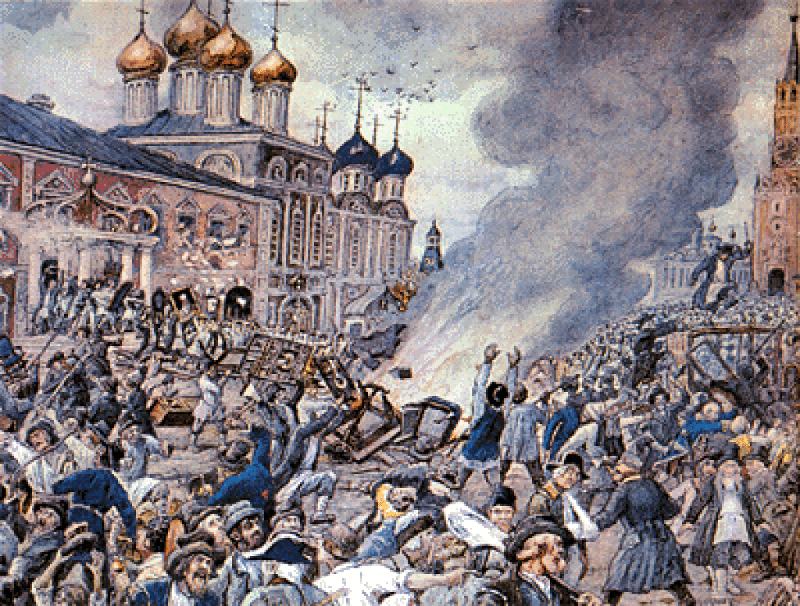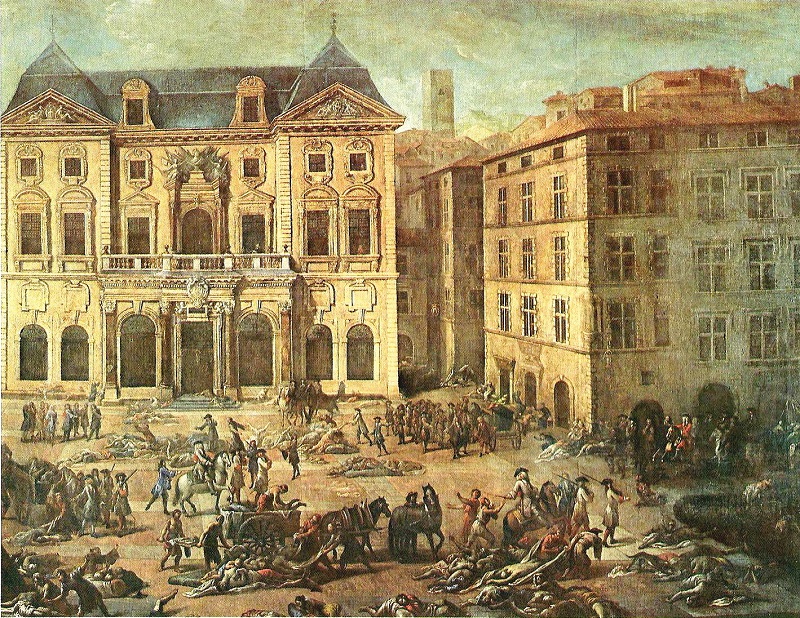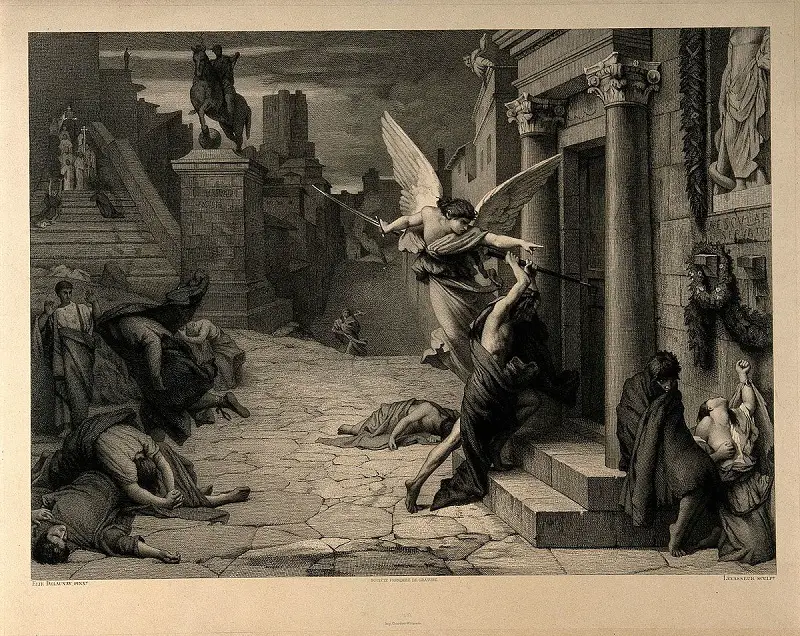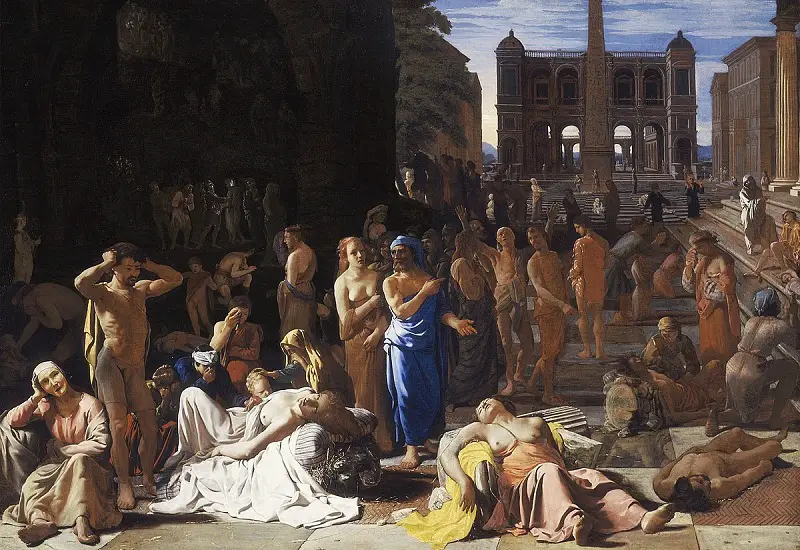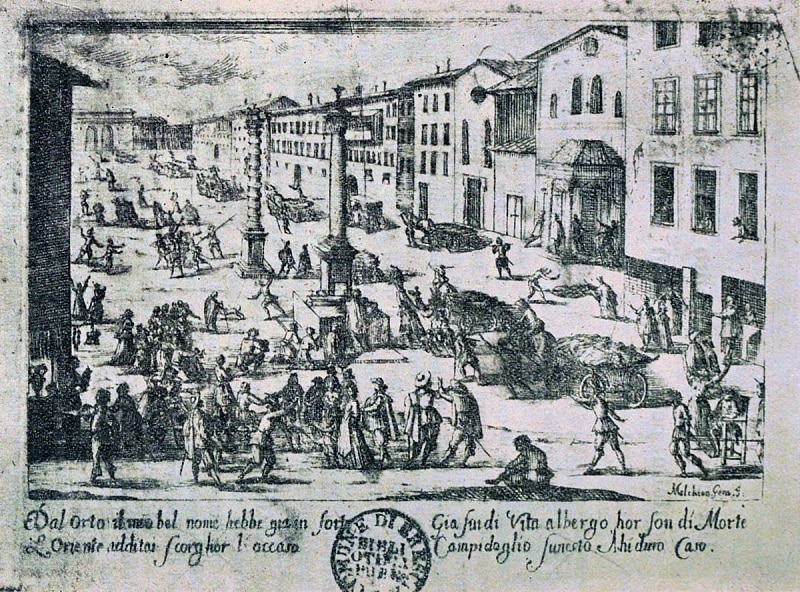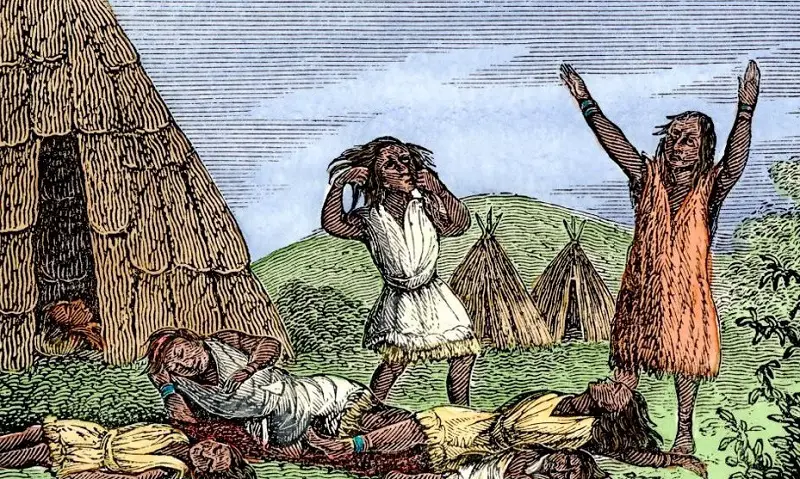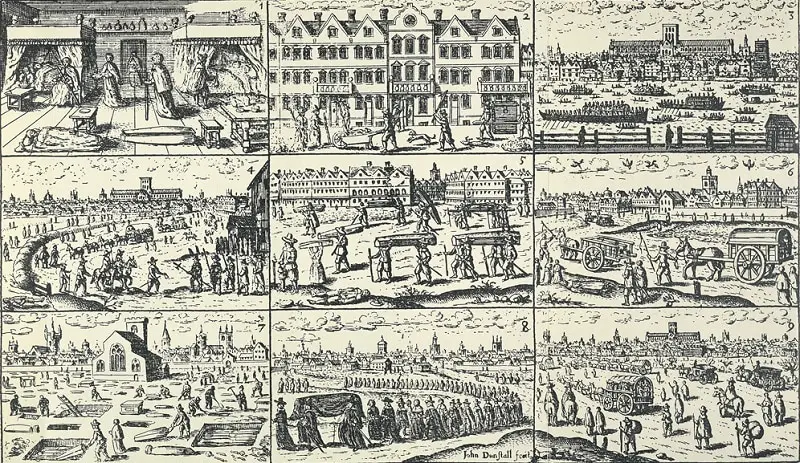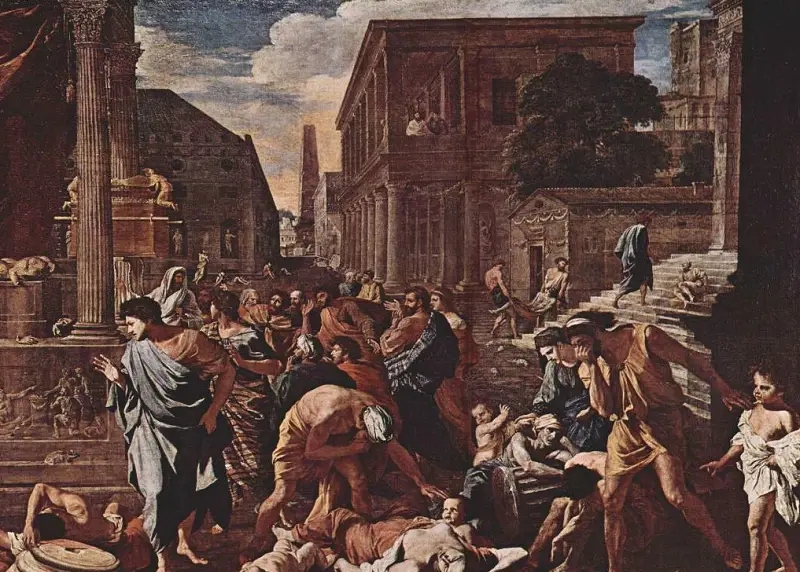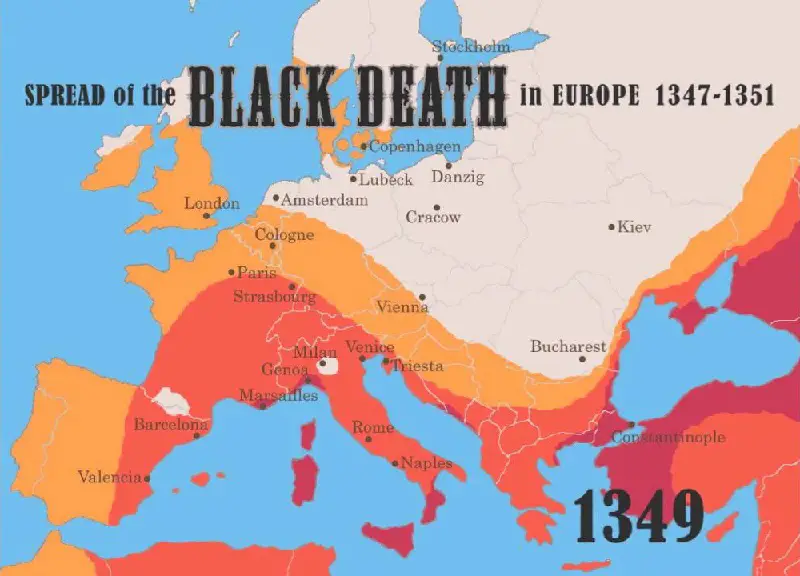Plague and Riot in Moscow, 1771
Source: Link
Quarantines and destructions of properties contaminated by the plague that hit Moscow in 1771 has also caused some extreme riot among the people. In fact, the economy of the city was paralyzed due to the closure of the markets, factories, stores, and administrative buildings.
Great Plague of Marseille, 1720-1722
Source: Link
One of Europe’s most significant outbreaks of the bubonic plague in the early 18th century was the Great Plague of Marseille. The disease arrived in France in 1720, which has resulted in a death toll that reached 100,000 people in the city and surrounding provinces. The economy had recovered only after a few years.
The Antonine Plague in Rome, 165-180 A.D.
Source: Link
Another term for this plague is the Plague of Galen, an ancient pandemic with traces of measles or smallpox. This disease was brought by the troops of the Roman Empire coming back from their campaigns in the Near East. It has drastically affected the social and political activities of the Roman Empire.
Plague of Athens in Greece, 430-427 B.C.
Source: Link
Described as a devastating epidemic that hit the city of Athens, the Plague of Athens occurred during the time when Athenian victory was almost at hand during the Peloponnesian War. The disease was referred to as an outbreak of the bubonic plague in its many forms.
The Great Plague of Milan in Italy, 1629-1631
Source: Link
The Italian Plague was indeed a part of the series of outbreaks of the bubonic plague in northern Italy. The Great Plague of Milan is the name of this epidemic, which claimed lives of about 280,000 people, within the cities of Venice and Lombardy.
The American Plagues, 16th Century
Source: Link
In the first contact of the native people of America and Europeans has brought overwhelming pandemics such as smallpox and measles. There were also other Eurasian diseases on the mix during that time. The rapid spread of the disease has led to the collapse of the American cultures, particularly the Inca and Aztec civilizations during the 16th century in South and Central America.
The Great Plague of London, 1665-1666
Source: Link
The massive outbreak of disease in England killed around 75,000 to 100,000 people. The disease was once again identified as bubonic plague, which involves the infection of the bacterium Yersinia pestis, which was transmitted through fleas.
The Plague of Justinian, 541-542
Source: Link
The Byzantine Empire was greatly afflicted by the pandemic known as the Plague of Justinian. The plague was believed to have originated from the bubonic plague. Its impact to the cultural and social condition of the people has been compared with that of the Black Death in the 14th century.
The Third Pandemic, 1855-1950s
Source: Link
A major plague began in the Yunnan province of China in 1855, which was named the Third Pandemic. The episode of the bubonic plague still continued to spread all the continents and killed over 12 million people in China and India alone. The pandemic was considered active until it was reduced to 200 deaths annually in 1959. The disease was spread quickly with the infection of ground rodents in central Asia.
The Black Death, 1347-1351
Source: Link
Often considered as the bubonic plague itself, the Black Death was among the deadliest pandemics that mankind has ever encountered. This was widely known to have been caused by the bacterium Yersinia pestis. The death toll of this disease has reached to about 75 million worldwide, 25-50 million of which were in Europe.

